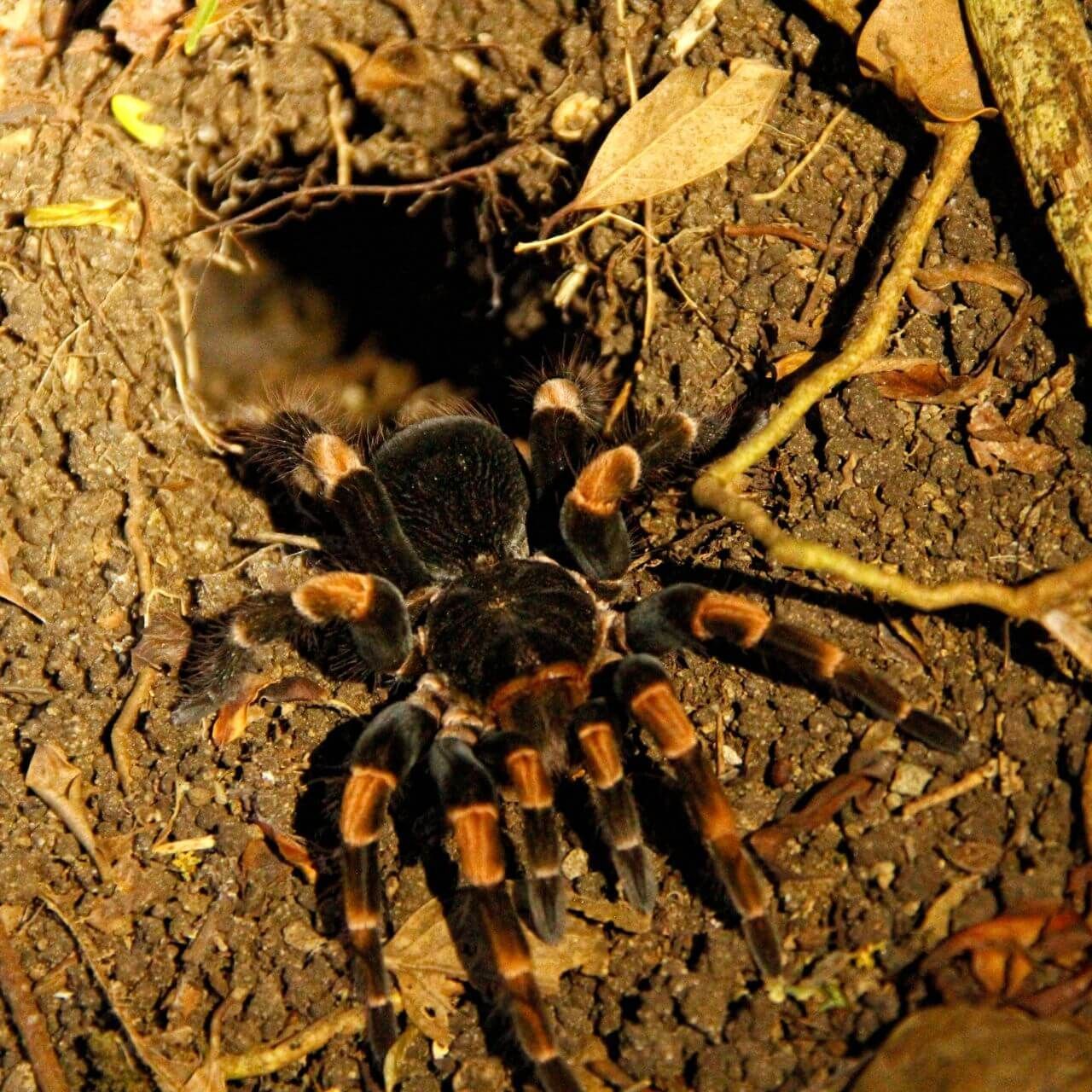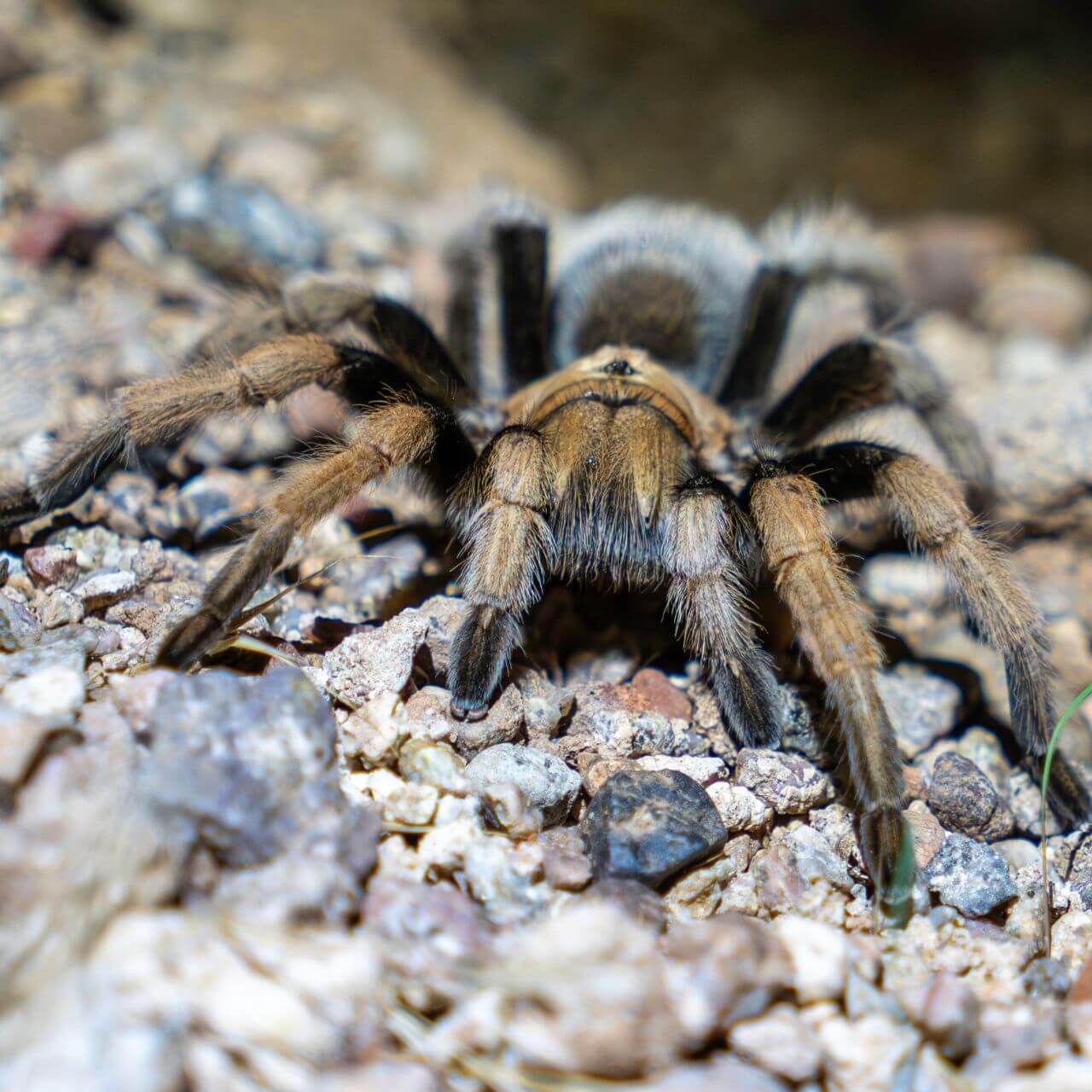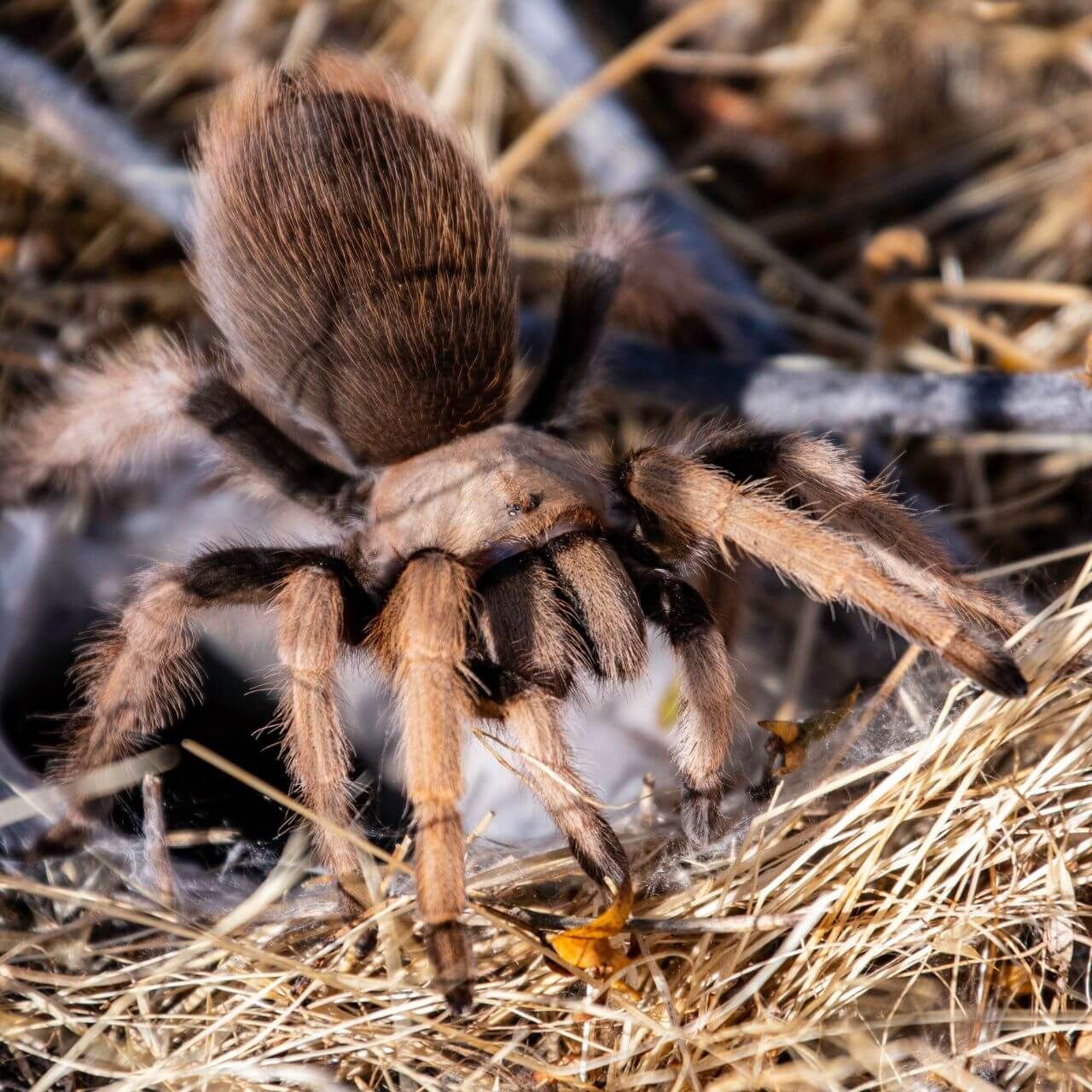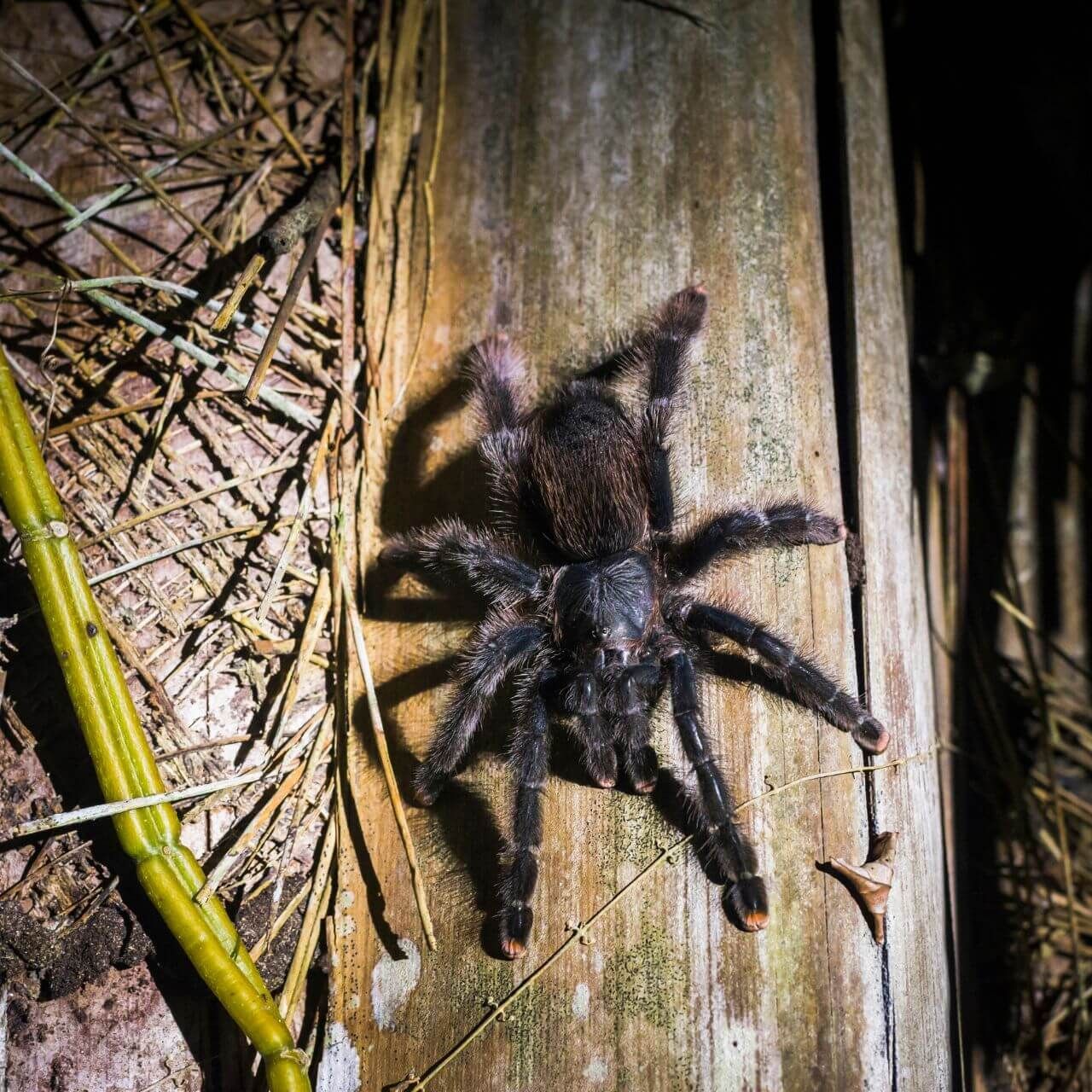Tarantulas

Let's Learn About Tarantulas
Word of the Week
Setae
Setae are hair-like structures used by some invertebrates to sense vibrations.
Bumblebees, moths, and tarantulas have setae!
Fast Facts

Where do tarantulas live?
Tarantulas live on every continent except Antarctica.
Most tarantulas live in warm or tropical environments. Tarantulas can usually be found walking across the ground of their environment or hiding in a burrow.
What do Tarantulas eat?
Tarantulas are carnivores.
Most tarantulas use their venomous fangs to catch prey like insects, other arachnids, and small reptiles and mammals.


What do tarantulas have in common?
- They all have 8 legs.
- They all have 2 body segments.
- They all have venomous fangs.
- They all have large, hairy bodies.
How many tarantulas are there?
There are more than 1,100 species of tarantulas.
Fortunately, most tarantulas are not endangered. However, many species face threats like deforestation and other types of habitat loss.

Species Spotlight
Goliath Birdeater
Theraphosa blondi
Crawling across the ground of the Amazon rainforest, we may see a tarantula the size of a dinner plate! The goliath birdeater tarantula is one of the largest spiders in the world. It has a legspan of 12 inches (1 foot) across. Their brown or black bodies camouflage into the forest floor as they search for food.
Unlike their name says, goliath birdeaters rarely eat birds! Most of their diet is insects, worms, and amphibians, like frogs. Like all tarantulas, they use their venomous fangs to kill prey. Their fangs grow quite large, sometimes longer than an inch long. While their venom is strong enough to kill small prey, it is mostly harmless to humans. Goliath birdeaters usually drag their prey back to the safety of their underground burrow before they eat.
Their venomous fangs also come in handy when defending themselves from predators. Coatis, large birds, snakes, and wasps prey on goliath birdeaters. When threatened, they rub setae (hair-like structures) on their legs together to make a hissing sound. They may also show their fangs or flick setae off their back using their legs. We call these floating setae "urticating hairs."
While some of us might get the heebie-jeebies from such large spiders, many people find them fascinating and want them as pets. They are commonly owned by spider-lovers. Unfortunately, like most rainforest animals, the goliath birdeater is threatened by deforestation. We can help birdeaters by using sustainably grown paper and food products.
Conservation Corner
Respect the Creepy Crawlies
If you took a hike and saw a small, furry bunny, you would probably “oo” and “ahh” and wish you could hug it. But if you saw a tarantula, you may have a different reaction!
Most people tend to love and protect things they like and care about. Unfortunately, many people don’t care about tarantulas because they find them creepy or weird. Tarantulas are often killed by people out of fear or dislike.
While tarantulas may not be cute or cuddly, they are important in their environments. Tarantulas keep populations of small animals, like insects, other arachnids, and small reptiles, in check. Without tarantulas, their populations would grow too large.
Many animals also rely on tarantulas for food. Birds of prey, like hawks, coyotes, snakes, large lizards, and even wasps feed on tarantulas. Some wasps, like the tarantula hawk wasp, use tarantulas as a food source for their offspring. Without tarantulas, these predators would not have as much food.
So, even though tarantulas may not be cute and cuddly, we still need to protect them. If you see a tarantula (or any animal!) in nature, make sure you respect its space. After all, you’re in their home anyway!
Tarantula Terminology
Match eat term to the statement it belongs in.
Learn More!
Glossary
Adaptation
The process by which a species becomes more fit for its environment over the course of several generations. It is a result of natural selection.
Antenna
An organ on the head of insects used to sense touch, smell, and taste.
Arachnid
A class of invertebrates with 2 body segments and 8 legs that lacks antennae and wings.
Arthropod
A large group of invertebrates consisting of insects, arachnids, myriapods, and crustaceans.
Burrow
An underground, tunnel-like shelter.
Camouflage
The ability for an organism to blend into its surroundings usually to hide from prey or predators.
Carnivore
An animal that primarily eats meat.
Egg Sac
A protective pouch made of silk where spiders deposit eggs.
Exoskeleton
A hard exterior that supports and protects many species of invertebrates.
Invertebrate
An animal that has no bones.
Molt
The process of an invertebrate shedding its exoskeleton.
Predator
An animal that hunts other animals for food.
Prey
An animal that is hunted and eaten by another animal.
Setae
Hair-like structures used by some invertebrates to detect vibrations.
Solitary
Describing an animal that lives alone.
Species
A closely related group of animals with similar characteristics that are capable of reproducing (example: tigers).
Spiderling
A baby spider.
Urticating Hair
Setae flicked from the back of tarantulas from North and South America used for defense.
Venom
A toxin that is injected into prey through teeth or a stinger.
Vertebrate
An animal that has a backbone.






